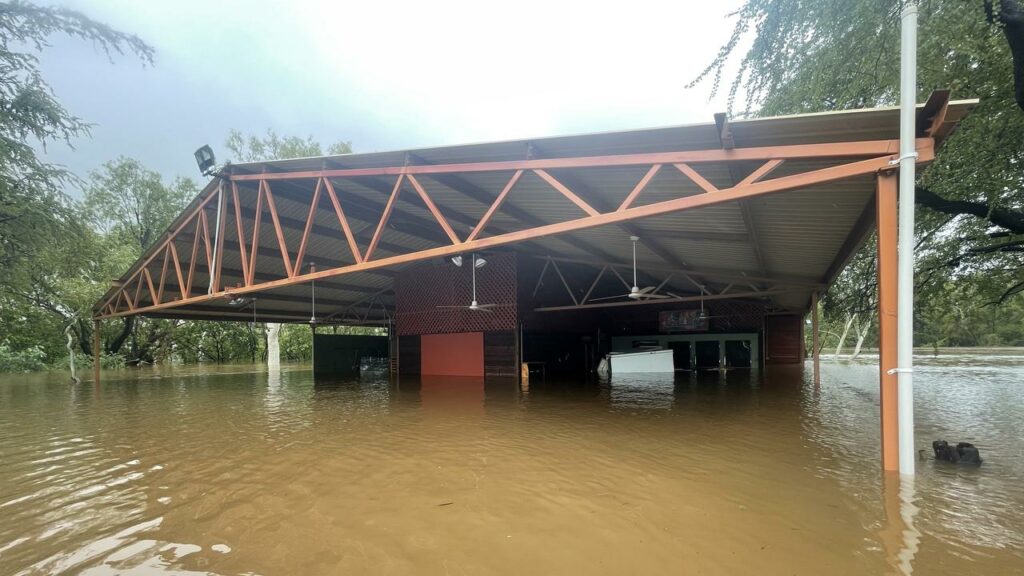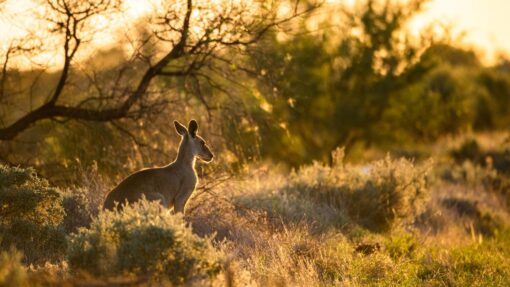Fire returns to the Kimberley on heels of epic flood
Tracey Ferrier |

Barely four months have passed since record floods swamped the Kimberley, but the region is already burning.
For those unfamiliar with Western Australia’s remote and rugged north, it’s hard to fathom it could be dry enough to ignite.
But for those who know the place, there’s an urgency to fire management efforts in a landscape still scarred by January’s torrent but blooming because of it.
“As early as late March there were some lightning-ignited fires occurring,” said conservation land manager Tim White, from the Australian Wildlife Conservancy.
“Our planned burn program is absolutely critical this year, when you consider the consequences of a number of really good wet seasons in terms of vegetation growth.”
The last wet season was a doozy thanks to ex-tropical cyclone Ellie.
In the space of a week, the system dumped almost a year’s worth of rain at breathtaking Dimond Gorge, not far from the main operations base for the conservancy’s Mornington-Marion Downs wildlife sanctuary.
Nearby Fitzroy Bluff, part of an ancient range of cliffs that rises 341 metres above sea level, became an island.
The Adcock River burst its banks, submerging many of the base’s buildings.
At the height of the drama, choppers were sent in to evacuate staff and researchers who had retreated to the few buildings that were not swallowed up.
There is still a vast clean-up task ahead, but the camp is now functional enough to support the conservancy’s contribution to a crucial early season burning program, covering over 6 million hectares of the Kimberley.
Mr White said the program was about minimising the risk of large-scale fires and safeguarding habitat for native species by creating a mosaic of burnt and unburnt areas.
The strategy means that when fires do break out, they are unable to take off and destroy large tracts of bush.
“One of the big aims is to maintain areas of long unburnt fuels – around three to four years of vegetation,” he said.
“The monitoring that AWC and a whole range of research collaborators have done shows that long unburnt fuel, around that age, is really important to habitat.”
One of the species that benefits from careful fire management is Mornington’s population of endangered purple-crowned fairy-wrens.
It has been studied for almost 20 years in one of Australia’s longest-running field studies involving birds.
Last year, Monash University scientists published a paper detailing how climate change is affecting the birds’ DNA and shortening their lives.
Monash staff are about to resume their field work for the first time since the floods as fire management efforts continue around them.
Significant ground burning has already been done and work is currently focused on careful landscape burning that will likely extend into June – all from a disaster-battered camp that is slowly being knocked back into shape.
Mr White said work on the camp would stretch into next year as the majority of the flooded buildings were inundated above the ceiling.
But there is an upside to match the down and that is the explosion of growth and life that has come with the big wet.
“It’s a really exciting time, it’s a really dynamic time. Everything is growing and abundant, and the place is clean and refreshed,” he said.
AAP


